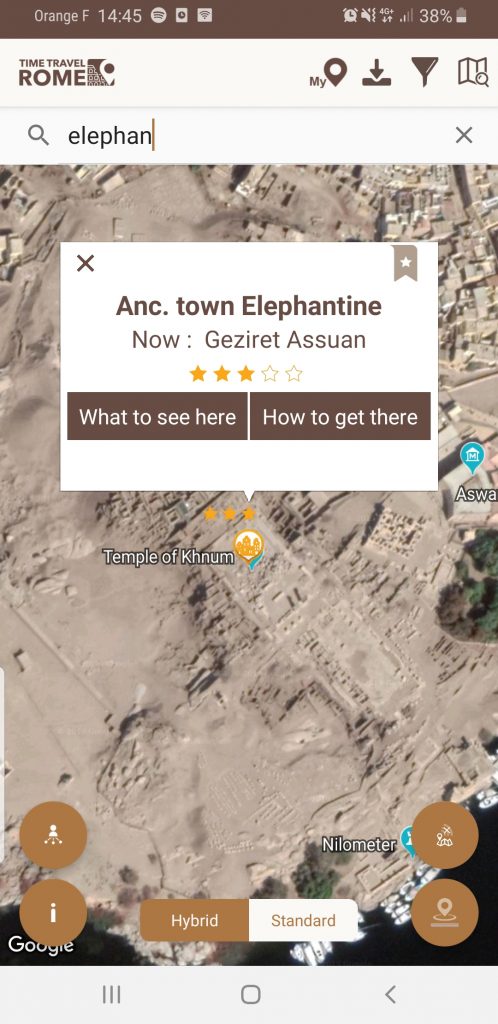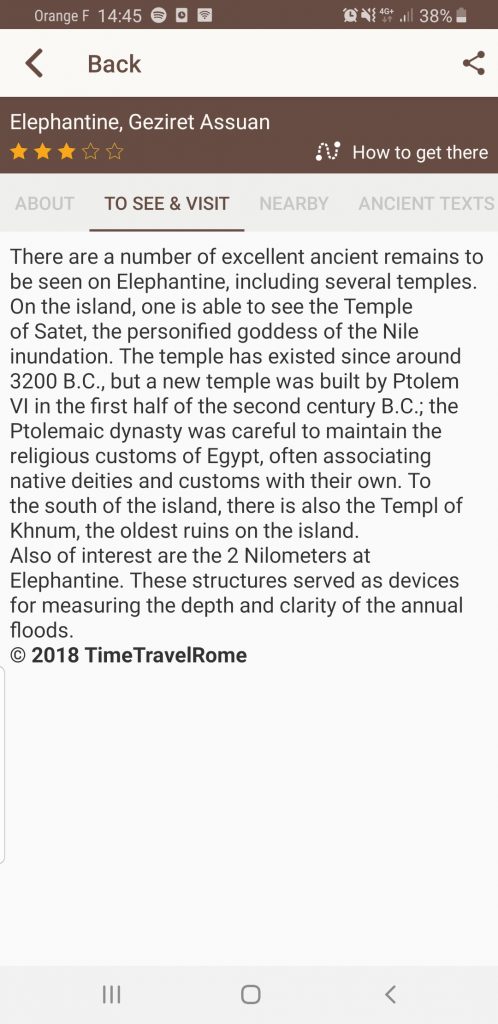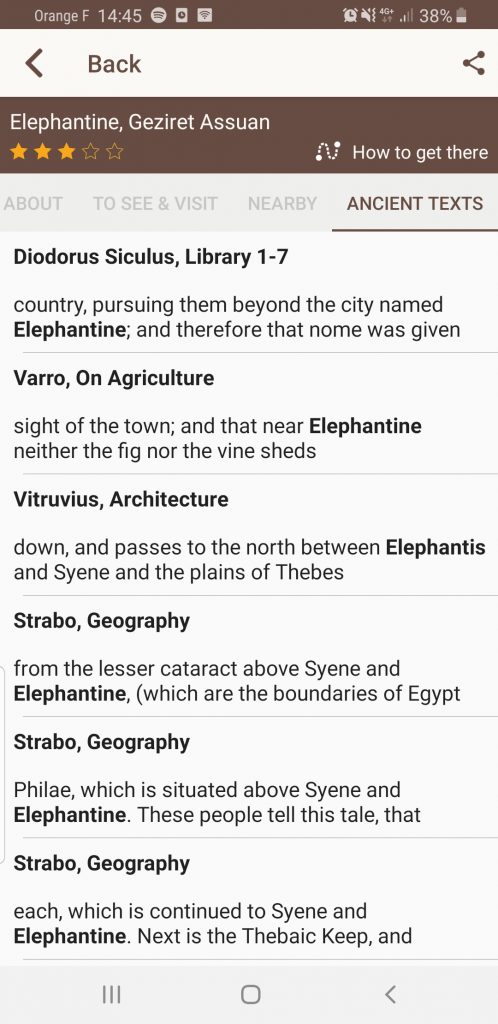Egyptians never called their river “Nile”. This word comes from the Egyptian “nwy”, which means ‘water’ – it was mispronounced by Greeks as “Neilos”. But the original and very ancient name of Nile was “Hapi” probably signifying “the hidden”. Later, Egyptians started to call the Nile ‘the river’, and Hapi became the name of river’s god, or, more precisely, the god of the annual flooding of the Nile with all his creative and destructive attributes.
God of the Fishes and Birds of the Marshes
Hapi was believed to live in a cavern at the supposed source of the Nile near Aswan. He was in charge of sending Nile waters through the land of the dead, the heavens and finally into Egypt, where waters emerged again between the Islands of Elephantine and Philae. Hapi was powerful, sometimes destructive, but also very beneficial: annual Nile floods deposited silt on the river’s banks, allowing the Egyptians to grow their crops each year. The cult of Hapi was situated at the First Cataract, on the island of Elephantine. To monitor Nile’ level and the transparency of its Nile waters, Priests maintained on the Elephantine island and elsewhere special devices called nilometers. Hopefully, we still have coins that show how both Hapi and Nilometers looked like.

Rare Coin with a Sleeping Hapi
The coin below is extremely rare – only a few coins like this one have been fund. Its reverse depicts Hapi and his main attributes. Hapi is seen here seated on a rock, and his right hand is raised above his head indicating that he is asleep. One can see to right a Nilometer with a scale and above the Nilometer there is a hawk – Horus.
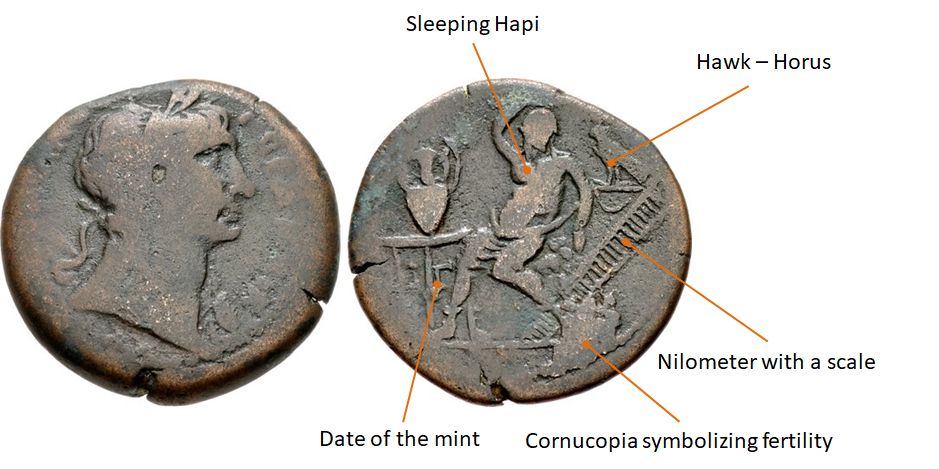
Nilometers on coins
The depiction of nilometers on coins struck in Egypt during Roman time is not very common, but we still have a few coins showing them. The coin below was struck during the reign of Elagabalus and the Nilometer is shown here as an obelisk with two genii attendants. The figure on the obverse of the coin is reclining Nilus himself. This way to depict Nile became really standard for the time. There is a statue in Vatican – the personified river Nile is sculpted exactly as on the coin below.
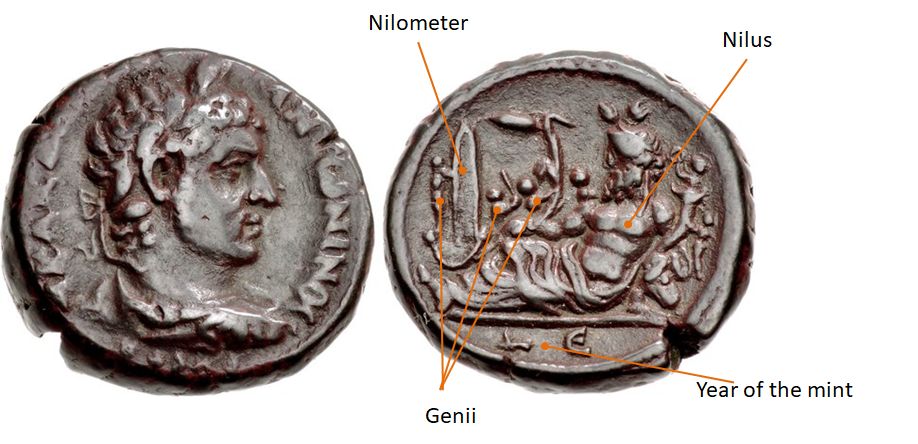
https://www.cngcoins.com/Coin.aspx?CoinID=349356
What to see there now ?
One of the best places to assess the significance of Nile for Egyptians and to see two existing Nilometers is the Island of Elephantine.
This relatively small island is located on the Nile near to the city of Aswan in southern Egypt. According to Egyptian mythology, the island – known to them as Abu – was the dwelling palace of Khnum, the ram-headed god of the cataracts who guarded and controlled the waters of the Nile. In antiquity, this island stood on the border between Egypt and Nubia, and its location served as a defensive site for a city and commercial center. The site is notable for the Elephantine papyri, caches of legal documents written in Aramaic that record a Jewish community that lived here in around the 5th century B.C.
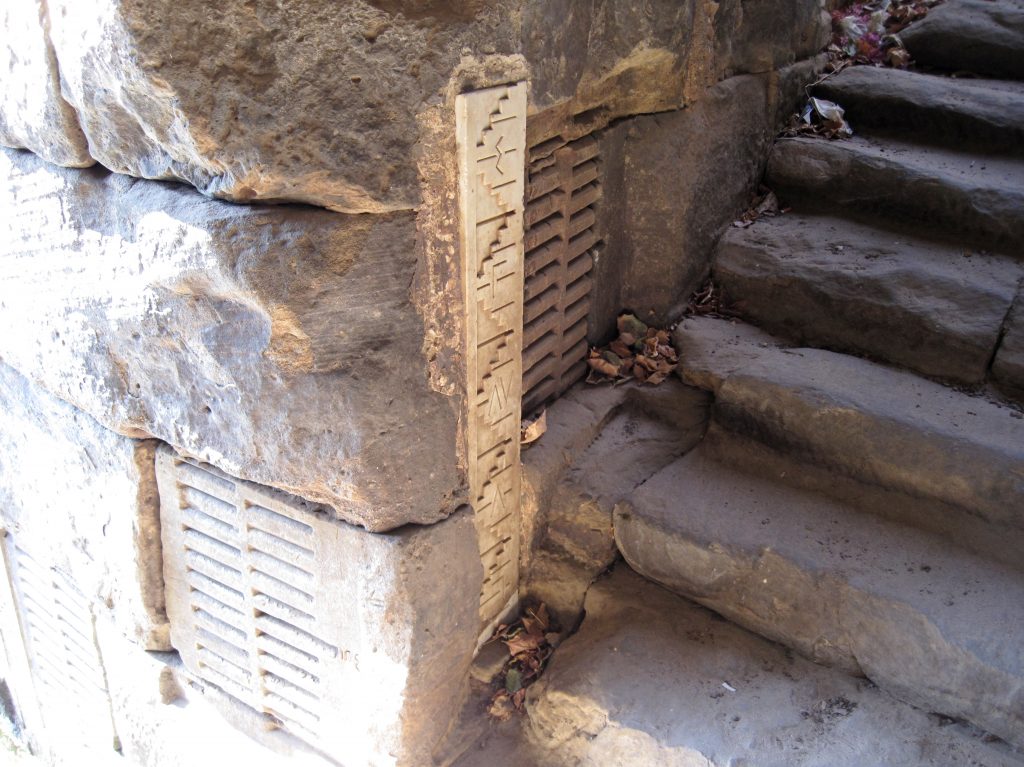
There are a number of excellent ancient remains to be seen on Elephantine, including several temples. On the island, one is able to see the Temple of Satet, the personified goddess of the Nile inundation. The temple has existed since around 3200 B.C., but a new temple was built by Ptolemy VI in the first half of the second century B.C.; the Ptolemaic dynasty was careful to maintain the religious customs of Egypt, often associating native deities and customs with their own. To the south of the island, there is also the Temple of Khnum, the oldest ruins on the island.
Also, as mentioned, of interest are the 2 Nilometers at Elephantine. These structures served as devices for measuring the depth and clarity of the annual floods.
Author: TTR.
Source of header pic – please see sources of coins mentioned in the article.
Elephantine Island on Timetravelrome app:
To find out more: Timetravelrome.

